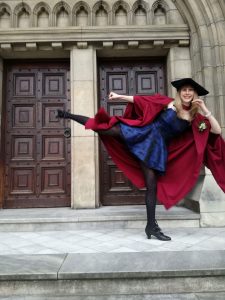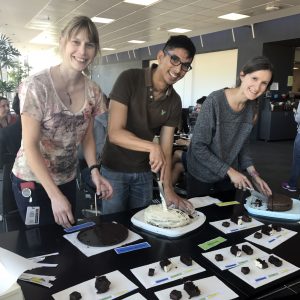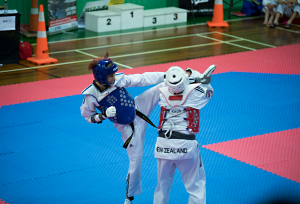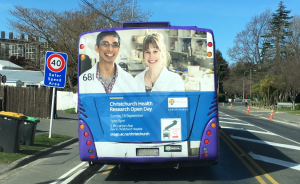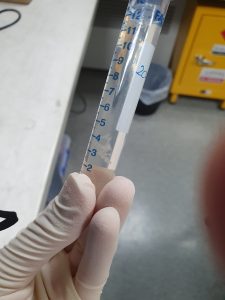Vanessa’s Work
BRCA-1 and BRCA-2 are the names given to two genes, which everybody contains a copy of in their DNA. Some individuals contain an epigenetic variant (a mutation) in these genes, which we know is associated with an increased risk of breast cancer. Interestingly though, two individuals may have an identical genetic mutation, and display breast cancer in different ways, at different stages of life, and one may never develop cancer at all. Vanessa Lattimore is investigating why.
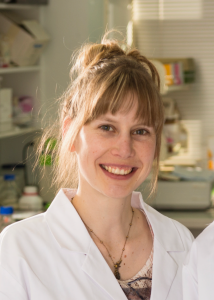 Vanessa manages the familial breast cancer study in New Zealand. In her own words, “essentially we are trying to enrol families who carry high-risk variants of BRCA-1 and BRCA-2. The reason for this is that we want to understand why individuals with the same genetic change (that increases the risk of breast cancer), display breast cancer in different ways.” The genomes of those that carry variants in the BRCA-1 and BRCA-2 genes can be studied for various factors, such as whether there are additional genetic changes present, that could be responsible for how breast cancer presents differently in different patients. Part of this study involved comparing the genes of 300,000 individuals with the breast cancer variant genes and comparing them to approximately 150,000 people in a control group who have no breast cancer variant genes. This work has, unfortunately, been postponed due to COVID-19 but is well underway.
Vanessa manages the familial breast cancer study in New Zealand. In her own words, “essentially we are trying to enrol families who carry high-risk variants of BRCA-1 and BRCA-2. The reason for this is that we want to understand why individuals with the same genetic change (that increases the risk of breast cancer), display breast cancer in different ways.” The genomes of those that carry variants in the BRCA-1 and BRCA-2 genes can be studied for various factors, such as whether there are additional genetic changes present, that could be responsible for how breast cancer presents differently in different patients. Part of this study involved comparing the genes of 300,000 individuals with the breast cancer variant genes and comparing them to approximately 150,000 people in a control group who have no breast cancer variant genes. This work has, unfortunately, been postponed due to COVID-19 but is well underway.
Another project of Vanessa’s involved collecting tissue samples of 367 women with breast cancer. These women donated tissue to the Christchurch tissue bank, which Vanessa’s team could use to extract DNA from, and test whether any of the women carried high-risk gene variants. Vanessa explained “we found that 13 women (of 367) carried high-risk breast cancer genetic variants. Of those 13, around half were not referred for genetic screening. This is really important as, if you know you carry a high-risk variant, you can manage the risk. For example, you can get a mastectomy, or you can have extra surveillance to detect the disease earlier if it does develop, which is a good option because if you get it early, you get better outcomes. But these women were not being referred for various reasons, because they did not fit within the current guidelines for referral. This adds evidence towards a screening of all breast cancer patients, which will allow everyone [carrying a high-risk variant] to be identified, and then they get an opportunity to manage their risk accordingly. It is really important not only for those individuals but also for their family members. Being a genetic disease, many of their family members will carry the same variants, and many of those will not have developed the disease yet. If they know that they are high risk as well, they can potentially prevent themselves from developing it.” This work is part of a recently published study.
Vanessa is now working on a project using oligonucleotides (short DNA or RNA molecules) to target BRCA-1 and BRCA-2 in certain regions. The goal is to repair the gene in men and women who carry the high-risk variant, in order to lower their risk of getting breast cancer. Vanessa explains the possible implications of this “if you have got a high-risk variant, then the biggest thing that you can do to lower your risk is a double mastectomy. That is hugely invasive and has side effects. However, if we are able to, for example, give someone an injection that lowers their risk as much, then that would be a lot better.” Oligonucleotide research, and its applications, is still in its’ infancy and Vanessa’s research is in its early stages.
To be clear, this process is not a form of genetic engineering and does not involve the manipulation of genes themselves. When our DNA is required to create a protein, a copy of the relevant gene is made, containing only the relevant information for forming that specific protein. This copy is called RNA. The process of copying the gene contained within the DNA, to form the RNA copy, is known as splicing.
As I mentioned earlier, everyone contains a copy of the BRCA-1 and BRCA-2 genes in their DNA. Those that contain epigenetic variants (mutations) in their genes are not able to produce functional proteins from their BRCA-1 and BRCA-2 genes, because the mutation causes the splicing step to be cut short. The idea is to use oligonucleotides to ‘fix’ the splicing step in people carrying genetic variants, with the hope that the RNA copy of the gene becomes functional and can go on to produce a fully functional protein.
Breast Cancer in Aotearoa
Vanessa explained the approximate frequency of variants in the BRCA-1 and BRCA-2 genes. “One in nine women will get breast cancer at some stage in their lifetime, and of those, I think around 3- 5%, sometimes up to 10% depending on the study you look at, will carry a high-risk variant. The majority of people do not have the genetic variant, but there are still a significant number that do. In the general population, men have one in 1000 chance of developing breast cancer. It changes for men, to about one and 100 if they have the variant, whereas in women it can increase up to roughly 70%. Men still have a much lower risk, even if they have the variant, but it is still much higher than what they had otherwise. But they also have less breast tissue, which is probably a big factor behind it.”
I asked Vanessa how we might go about implementing the findings of her research into clinical practice in New Zealand. The issue that is often raised when proposing a genetic screen of a population for a specific genetic mutation, is that other mutations can be found, where we do not know what they mean or what their associated risks are. These are called incidental findings, and if every unknown incidental finding that was discovered was referred to the public health system for treatment, the public health system could not cope. The way around this is to offer a genetic screen but to look specifically at the BRCA-1 and BRCA-2 genes, as we know that there are actionable outcomes if a mutation is discovered. Vanessa explained “I think it would be hugely beneficial to offer everyone the opportunity to have a genetic screening that looks at specific genes (in some cases specific changes in certain genes), which if present, you can actually do something about, or at least have that awareness going forward. Even having awareness is great because, for instance with BRCA-1 and BRCA-2, we would know every family that carries it, and they will all have the opportunity manage that risk, and that will lower the incidence of breast cancer. This will save lives. I know that. That would be great.”
The Road to GO
Vanessa grew up on a farm near Methven, well accustomed to the outdoors. Vanessa has some great stories from the farm. One time while out roughing, she and her sister came across a set of antlers stuck to a water trough. When they got closer, it turned out to be a live wild stag! Another endearing story was raising a baby Thar, called Forest. “Honestly, Thar are incredible. If you think lambs can run around all day, Thar are insane. We used to run around yelling “Run, Forest, run!” and he would chase after us. One day he was walking along the second-floor veranda, less than a week old, and he trotted off the edge. My sister said, “oh my god!” But looked over, and he kept walking, like it was nothing! Honestly Thar are incredible.”
Vanessa is also well adept in martial arts and has competed internationally. “I started Taekwondo when I was eleven, but actually quit three months after and started karate, which I have been doing for about 21 years. I went to worlds last year, and I went overseas and did a few tournaments before COVID. It was good timing. After that, I did not have anything to aim for, and I started from scratch. Now I am a white belt in karate.”
Not knowing what she wanted to do after high school, Vanessa attended university for the sake of doing something. She explained “I did a Bachelor of Science in Conservation and Ecology because I love animals and I decided I wanted to work in a zoo. I figured if animals are going to be stuck in a zoo, they should have a good life. I was going to ‘save the animals’. But I worked out pretty soon that you could not actually get a zookeeper qualification at university, you had to do a specific course in Auckland.” She then went on to do honours, sequencing the genome of the spider species Dolomedes aquaticus. She then took some time off to work and explained “it was during that one and a half years I had off, working over that time, I realised that genetics was a career you could have because I did not realise that before that point. I also learned that I really enjoyed research and decided that I wanted to do research and a PhD. I decided to start looking at options. My two choices were either going to be the genetics of something to do with farming to improve farming in some way. Or human health, because I wanted it to be relevant and make a difference in the world. I developed the project that I came up with, with Logan [Walker], genetics of breast cancer splicing. Which is exactly what I am doing still. It fit me perfectly. I started that, and have been here ever since, it has been eight years now. I love it.”
Oligonucleotides
I asked Vanessa what question relating to her research she would most like answered, in her own words, “it would probably be something to do with… whether there is a genetic target that we could go after that would help us to stop breast cancer occurring, or cancer in general. Something to stop cancer from happening. Prevention is better than cure. If we can prevent breast cancer, then that would be ideal.” Vanessa used an example of similar research for spinal muscular atrophy, to explain how this method could work. The SMA-1 gene is responsible for producing a protein that goes on to develop muscle tissue. Those containing a mutation in the SMA-1 gene, cannot produce the protein, and end up having muscle degeneration. This occurs from childhood, and usually, those with spinal muscular atrophy will never be able to walk. However, we also have another copy of the gene, called SMA-2, which Is identical to SMA-1, apart from four single nucleotides (of approximately 500,000 base pairs) different. Researchers have used oligonucleotides to attempt to alter the splicing of SMA-2, such that it produces a functional protein, identical to the type SMA-1 should produce. Vanessa explained “that way the whole gene is made into a protein and produces functional protein. And these children walk. It is incredible. It is actually incredible.”
Vanessa then explained that some animals like elephants and blue whales, have multiple copies of the BRCA-1 and BRCA-2 genes in their DNA, and are not prone to breast cancer. The effect of this is that even if the original copies of the BRCA genes develop a mutation, they can still produce functional protein from the copies of the genes. This is a naturally occurring example of the process described above involving the SMA genes. These animals naturally have redundant copies of genes built into their DNA. For cases where we have similar, but not identical copies of a gene, like SMA-1 and SMA-2, there is the potential to use oligonucleotides to intervene, and create a functional copy of the non-functional gene.
Christchurch Tissue bank
Vanessa praised the Christchurch Tissue bank and it’s overseer, Helen Morrin, for being an absolutely invaluable resource for her research. “Trying to collect samples as they come in takes a while. For the study involving 367 women, samples were collected by the tissue bank between 2013 and 2017. I was able to access and get given them all on a day. I do not have to wait that four-year period to collect the samples. The amount of work that would go into collecting those samples over that time is a lot. It is a great thing; the tissue bank is absolutely invaluable…Depending on what tissue they are getting, they may get tumours and they will break them up into little pieces that they can divvy out. Thus, they can be used for multiple projects. For my project, I was looking at germline rather than somatic changes, I was not interested in the tumour, but the blood. They had four blood spots about [this big]. I was able to get up to six, three-millimetre punches from one of those blood spots to get DNA from it. They have still got plenty left for other projects in the future, or if we need to go back and get more. It is a really good resource. because it not only saves researchers a lot of time, it can also be used for multiple projects, with the same amount of effort to collect it.”
Vanessa has a deep-rooted passion for her research that shines through in her explanations. She has a clear vision of where her research might lead while being entirely open to her findings and results. Her research could have far-reaching results and in my opinion, is likely to become a routine part of our healthcare system. Vanessa’s interests extend far beyond the laboratory of course, and she has retained a love for farming and farm life and continues to excel in martial arts. I asked Vanessa what she would most like to be remembered for, to which she responded “I would like to make a positive impact in some way. Exactly what for would either be in my research or saving the planet. Or at least helping raise awareness of the situation, and making positive changes to correcting it in some way.”
Written by Don Sinclair
Images Supplied by Vanessa Lattimore

